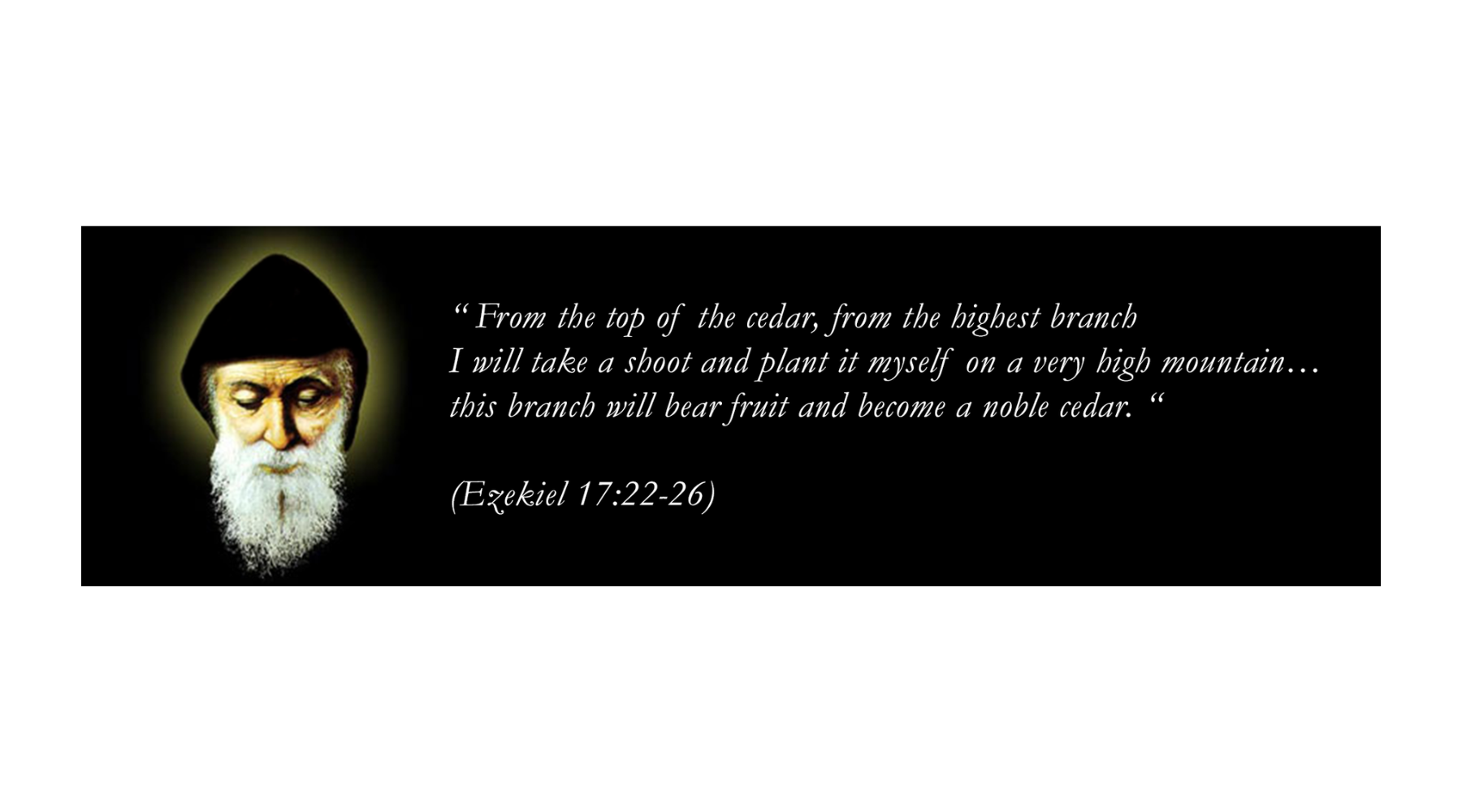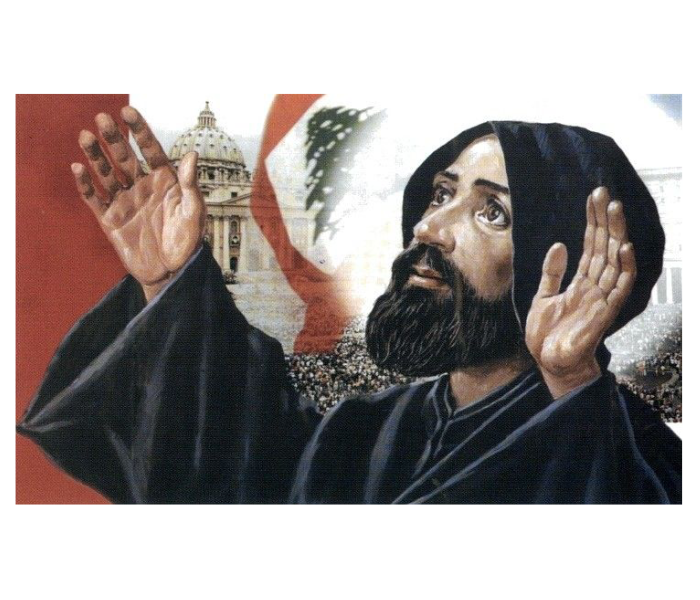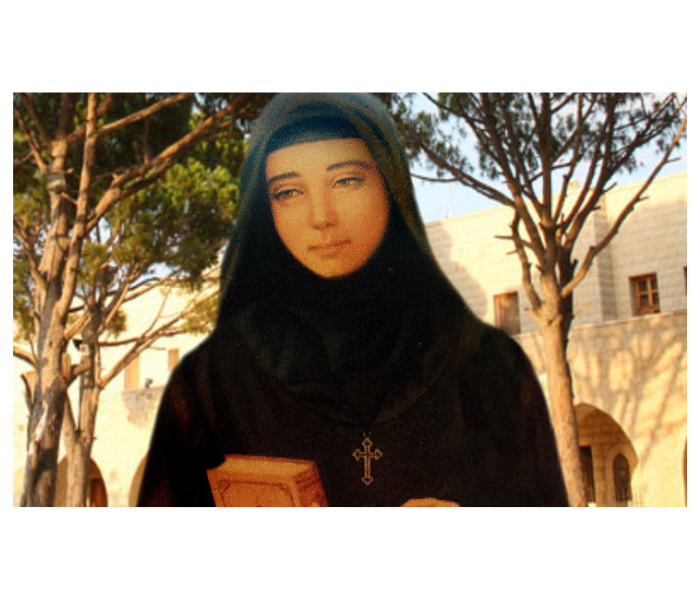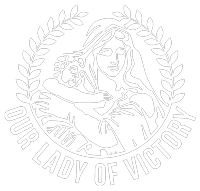THE MARONITE HISTORY
sAINT MARON – FOUNDER OF THE MARONITE CHURCH
THE HISTORY
The history of the Maronite Church is a story of a people who were continually willing to sacrifice their lives and possessions for religious convictions and human liberties. Its origins can be traced to the hermit Maron (350-410 AD), who converted a pagan temple for worship. Over 800 monks later followed in his footsteps, adopted the lifestyle and way of St. Maron, and became known as Maronites.
Later with the Arab invasions (7th-10th centuries) and the continuing faith conflicts, the Maronites migrated to Mt. Lebanon, finding natural protection in the mountain havens. By 687 AD, the Maronite community organized and established an autonomous church with St. John Maron as its patriarch of Antioch.
The Syriac Maronite Church was enriched and influenced by three centers of learning and culture:
Antioch – a center of commerce and education in West Syria, now Turkey, which represented Greek and Syriac influence. This city, where followers of Jesus were first called Christians, gave the Maronite Church its biblical theology and its unique sense of scripture.
Edessa – a prominent city where St. Ephrem lived, in ancient Mesopotamia, of Semitic culture and Syriac poetry. Both informed and shaped the prayer and hymnody of the Maronite Church.
Mt. Lebanon – a region in present day Lebanon. It provided a haven for the Maronite monastic life, worship and traditions begun by Maron, and nurtured by John Maron, its first Patriarch, and many others.
From these three centers the theology, spirituality and liturgy developed and reflected concrete scriptural images and symbolic, poetic themed.
Maronite Catholics live in many nations and cultures. Presently, the Mother Church is in Lebanon, and daughter communities exist in different nations. Often the sons and daughters of St. Maron are called by the name BEIT MAROUN, “the house of Maron”.
Historical Reference
“Historia Religiosa,” written by Theodoret of Cyrrhus around 440 A.D. is our only source on St. Maroun’s biography. The author describes the life of hermits in Cyrrhhus and vicinity. In chapter 16 the author mentions that St. Maroun was one of those hermits. He had a tremendous influence on his disciples (22).
Geographic Location
The diocese of Cyrrhus is in northern Syria. In those days, the Romans had divided Syria into three administrative regions: Syria Prima (Ca.le-Syria), Syria Secunda (Salutaris) and Syria Tersa (Euphratia) with Antioch, Apamea, and Hierapolis (or Membej) as their capitals respectively. The regions between south of Apamea and the southern Lebanese borders were divided into two parts: Lebanese Phoenicia with Homs – and then Damascus – as the metropolis, and Maritime or coastal Phoenicia with Tyre as the metropolis. The Diocese of Cyrrhus, with Theodoret as its bishop, was west of Euphratia. Cyrrhus was at a distance of two days north east of Antioch and about 70 kms north west of Aleppo. This diocese seat was Antioch founded by St. Peter prior to his departure to Rome. Theodoret mentions that when St. Maroun decided to lead a life of isolation, he went to a rugged mountain half-way between Cyrrhus and Aleppo. There was a huge pagan temple for god Nabo of which was derived the name of the mountain and the neighboring village Kfarnabo.
Exemplary Life
St. Maroun consecrated the temple for divine christian worship. The pattern of his life had a great influence on his disciples who followed suit and were “as plants of wisdom in the region of Cyrrhus”(23)
St. Maroun’s sainthood became known throughout the Empire. St. John Chrysostom sent him a letter around 405 A.D. expressing his great love and respect and asked St. Maroun to pray for him.
St. Maroun died around 410 A.D. and willed to be buried in St. Zabina’s tomb in Kita in the region of Cyrrhus. However, his will was not executed because people from different villages wanted to have him buried in their towns. Theodoret’s description of St. Maroun’s burial place points to the populous town of Barad in the proximity of Kfarnabo. A huge church was built in that town around the beginning of the fifth century A.D. (25).
Inside this church there was a sarcophagus, which possibly contained St. Maroun’s body. According to a Maronite tradition, the followers of St. Maroun carried the relics of the Saint, especially the skull, to St. Maroun’s Monastery or “Beit Maroun” built in 452 A.D. between Hama and Aleppo in Syria.
Relic of Saint Maron
The skull was carried to St. Maroun’s Monastery in Kfarhai, Batroun – Lebanon around the turn of the eighth century. Patriarch Douaihy mentions: “When Youhanna (John) Maroun settled in Kfarhai, he built an altar and a monastery after St. Maroun’s name and put St. Maroun’s skull inside the altar to heal the faithful. That’s why the monastery is called “Rish Mro” (Syriac) meaning “Maroun’s head”(26) .
Later, St. Maroun’s skull was taken to Italy. In 1130 A.D. one of the Benedictine monks came tc the region. This monk was the rector of the Cross Afonastery near Foligno-Italy. During his visit he heard about St. Maroun’s skull, and upon returning home he publicized St. Maroun’s virtues. As a matter of fact, a church was built after St. Maroun’s name in Foligno. The Bishop of Foligno carried the skull to the city in 1194 A.D. and put it in the church of the diocese. The faithful in the city made a statue of silver for St. Maroun and put the skull in it. During his stay in Italy in 1887, Bishop Youssef el-Debs was given some relics of St. Maroun’s skull by the Bishop of Foligno(27).
LEARN MORE ABOUT THE MARONITE CHURCH
Saint Sharbel, Hermit of Lebanon

The Story of Sharbel
On May 8, 1828 in a mountain village of Beka’kafra, the highest village in the near-east, Sharbel was born to a poor Maronite family. From childhood his life revealed a calling to “bear fruit as a noble Cedar of Lebanon”. Sharbel “grew in age and wisdom before God and men”. At 23 years old he entered the monastery of Our Lady of Mayfouk (north of Byblos) where he became a novice. After two years of novitiate, in 1853, he was sent to St. Maron monastery where he pronounced the monastic vows of poverty, chastity and obedience. Charbel was then transferred to the monastery of Kfeifan where he studied philosophy and theology. His ordination to the priesthood took place in 1859, after which he was sent back to St. Maron monastery. His teachers provided him with good education and nurtured within him a deep love for monastic life.
During his 19 years at St. Maron monastery, Sharbel performed his priestly ministry and his monastic duties in an edifying way. He totally dedicated himself to Christ with undivided heart to live in silence before Nameless One. In 1875 Sharbel was granted permission to live as a hermit nearby the monastery at St. Peter and Paul hermitage. His 23 years of solitary life were lived in a spirit of total abandonment to God.
Sharbel’s companions in the hermitage were the Sons of God, as encountered in the Scriptures and in the Eucharist, and the Blessed Mother. The Eucharist became the center of his life. He consumed the Bread of his Life and was consumed by it. Though this hermit did not have a place in the world, the world had a great place in his heart. Through prayer and penance he offered himself as a sacrifice so that the world would return to God. It is in this light that one sees the importance of the following Eucharistic prayer in his life: “Father of Truth, behold Your Son a sacrifice pleasing to You, accept this offering of Him who died for me…”
On December 16, 1898 while reciting the “Father of Truth” prayer at the Holy Liturgy Sharbel suffered a stroke. He died on Christmas Eve at the age of 70. Through faith this hermit received the Word of God and through love he continued the Ministry of Incarnation.
On the evening of his funeral, his superior wrote: “Because of what he will do after his death, I need not talk about his behavior”. A few months after his death a bright light was seen surrounding his tomb. The superiors opened it to find his body still intact. Since that day a blood-like liquid flows from his body. Experts and doctors are unable to give medical explanations for the incorruptibility and flexibility. In the years 1950 and 1952 his tomb was opened and his body still had the appearance of a living one.
The spirit of Sharbel still lives in many people. His miracles include numerous healings of the body and of the spirit. Thomas Merton, the American Hermit, wrote in his journal: “Sharbel lived as a hermit in Lebanon—he was a Maronite. He died. Everyone forgot about him. Fifty years later, his body was discovered incorrupt and in short time he worked over 600 miracles. He is my new companion. My road has taken a new turning. It seems to me that I have been asleep for 9 years—and before that I was dead.”
At the closing of the Second Vatican Council, on December 5, 1965 Sharbel was beatified by Pope Paul VI who said: “…a hermit of the Lebanese mountain is inscribed in the number of the blessed…a new eminent member of monastic sanctity is enriching, by his example and his intercession, the entire Christian people…May he make us understand, in a world largely fascinated by wealth and comfort, the paramount value of poverty, penance, and asceticism, to liberate the soul in its ascent to God…”
On October 9, 1977 during the World Synod of Bishops, Pope Paul VI canonized Blessed Sharbel among the of the Saints.
MORE ABOUT SAINT SHARBEL
MORE MARONITE SAINTS



We are Christians. We are Catholic. We are Maronite.
Contact
Follow us on Social Media!
Address
- Our Lady of Victory Maronite Catholic Church
- 1000 Tropical Avenue
- Pittsburgh, PA 15216
Office Hours
© 2023 Our Lady of Victory. All Rights Reserved


